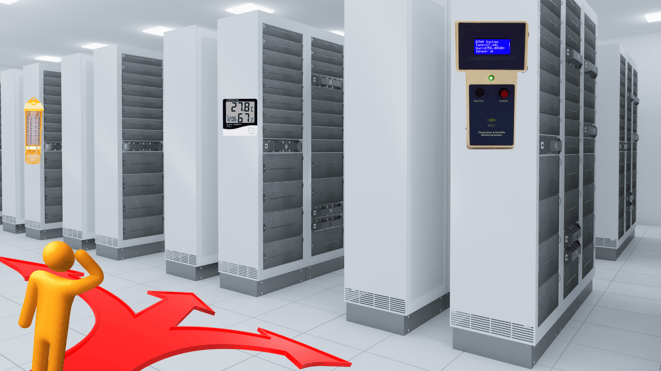
There are many different types of monitoring systems available in the market today. You can roughly divide these into mechanical, electrical, and IoT-enabled devices.
In this blog, we compare the advantages and disadvantages of using each of these with an example for the case of Temperature and Humidity monitoring.
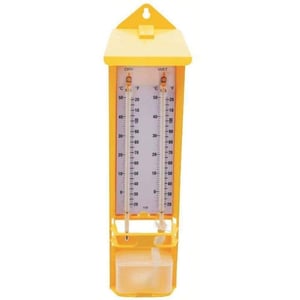 For the mechanical type, we will be using the example of the wet and dry bulb hygrometer.
For the mechanical type, we will be using the example of the wet and dry bulb hygrometer.
These types of devices have been around since the 1800s.
Since the device has been around and in use for such a long time, people expect it to be the best and use it widely in the industry.
But the current requirements of the industry have made this device obsolete. We will see why below.
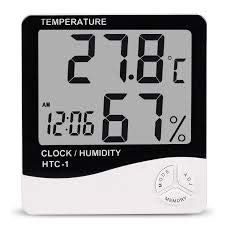 For the electrical type, we have used a wall-mounted temperature and humidity monitoring system. This device has been around since the 1980s and is widely used in homes where people want a system that does not require regular maintenance and only need a glance to get approximate readings.
For the electrical type, we have used a wall-mounted temperature and humidity monitoring system. This device has been around since the 1980s and is widely used in homes where people want a system that does not require regular maintenance and only need a glance to get approximate readings.
It features a clock, which is very handy for homeowners and hobbyists.
Pharmaceutical companies have stopped using these, yet it is not uncommon to see one of these in server rooms.
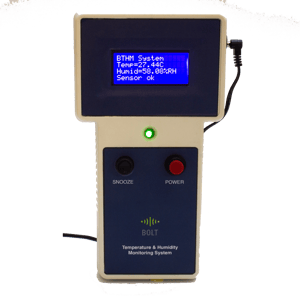 The Blake is a relatively new entry in the line up for Temperature and Humidity monitoring system and features a highly accurate sensor along with internet connectivity.
The Blake is a relatively new entry in the line up for Temperature and Humidity monitoring system and features a highly accurate sensor along with internet connectivity.
The Blake uses the Bolt IoT platform as its IoT backbone and allows you to monitor its output over the internet.
Since this system is IoT enabled, it has several advantages over the earlier electrical system.
We shall discuss these advantages below.
Let's look at the advantages and disadvantages of each of the devices by comparing different useful features.
Ease of Use:

To compare the ease of use of these devices, we have compared the time it takes to take a reading from these devices.
The wet and dry bulb hygrometer comes with a table printed on a paper. To take a reading, one has to read the temperature readings from both the thermometers. The temperature reading of the dry bulb is the final temperature reading, but the humidity reading has to be calculated by subtracting the 2 temperature readings and then looking up the values in the table. It is quite common for the subtracted value to not be present in the table, and requires a judgement call on whether to use the higher value for comparison or the lower value for comparison.
For the electrical type of measurement device, you can have a quick glance at the screen and you have the data that you need.
At this point, you would think that the electrical type of unit is the best you can get in terms of ease of use, but the Blake would prove you wrong. While the Blake does have a display unit to display the temperature and humidity, since Blake is connected to the internet over wifi, you can see the current temperature and humidity not only from the room the unit is installed in, not only the office but from anywhere in the world. Here the Blake trumps the other 2 units.
Maintenance
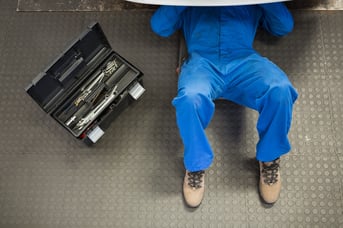
There is not much maintenance involved with the 3 units, so here we will take the point of battery-based operation.
You would think that the Hygrometer does not need any batteries and does not need to be powered, so it wins in this comparison. But to measure the humidity, it has to first measure the temperature at which water is evaporating in the room (evaporation temperature depends on Humidity, whereas boiling point depends on pressure, and is generally 100 degrees Celcius). So the water stored in the Hygrometer is continuously used up, not unlike the charge in a battery. This water needs to be replaced every 1 to 5 days depending on the humidity. Also, we have seen that if the water is kept for a long time without cleaning the sump, then algae may start growing in it, giving you wrong readings.
The electrical unit runs on a battery, which needs to be replaced from time to time. As per our experience, the battery needs to be replaced once in a year.
Blake on the other hand has 2 modes of operation. You can use a power bank to power it, and depending on the capacity of the power bank, you can keep the unit powered for a day to a week. You can also use a micro-USB cable charger to power the Blake, and never need to change the batteries. Also, since the device is connected to the Bolt Cloud, you can set up an alert for when the device is powered off. Thereby giving you a convenient alert to go and change the battery if required.
Calibration
 There are 2 types of devices in the industry as per the standard for calibration. The ones which cannot be calibrated, only evaluated on whether they fit your criteria or not (This is what a calibration certificate does), and the ones which can be calibrated (modified in some manner) to give the best possible result.
There are 2 types of devices in the industry as per the standard for calibration. The ones which cannot be calibrated, only evaluated on whether they fit your criteria or not (This is what a calibration certificate does), and the ones which can be calibrated (modified in some manner) to give the best possible result.
With the current industry standards for calibration, the wet and dry bulb hygrometer and the electrical unit can only be evaluated to be good enough. Their calibration cannot be modified to get the most accurate readings possible. Also once the accuracy of these units drifts outside of standard values, the unit has to be replaced with new units.
The Blake however can be calibrated to have the best possible accuracy. So you can expect to use the Blake for years and years without needing to replace it.
Data Logging

In the current industry scenario, it is very important to have a log of temperature and humidity data. These can be used for several things like evaluating your work environment, evaluating the environment control devices like the AC, inspecting the risk of fires, applying for certification and insurance.
It is a current industry practice to have a person log the temperature and humidity readings on a sheet 3 times a day. This is troublesome for 2 reasons.
1. You need the person to be present at those 3 times.
2. The person has to be in the right mindset to log the data accurately.
While the Wet and Dry bulb Hygrometer and the electrical unit require you to log the data manually, the Blake logs the data automatically to the internet every 5 minutes.
This applies even during the night, weekends, and holidays. This means you will have a log of the data 24x7
Alerts

It is pretty clear that the Wet and Dry bulb hygrometer does not provide you with any alerts.
The electrical unit, depending on the variant allows you to set thresholds, and the unit will make a buzzing sound when the temperature or humidity is outside this threshold. The drawback here is that a person has to be in earshot distance of the unit, and the buzzer turns off after the temperature comes back in the required range. This means if there was a threshold breach and no-one noticed, you would never know.
For the Blake, however, you can set threshold-based alerts. This alert stays on until a person presses the snooze button. Also, you can set up SMS and email alerts. This means you can make sure you know of a threshold breach even if you are on the other side of the globe when it happens. Not only that, you can set up the alert to be sent to multiple people, including your office maintenance and fire cell.
Conclusion
Well looking at these features and the comparison, it is pretty clear that Blake is a winner.
Are you still using 19th-century technology to monitor your 21st-century server room and data centers?
Switch to the Blake temperature monitoring system now, by filling up the following form.








